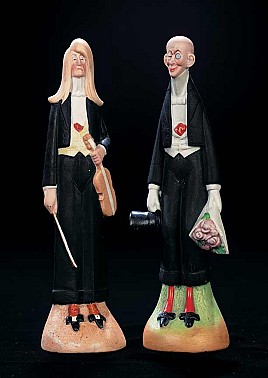WHEN THE CIRCUS CAME TO TOWN
Sunday, November 11, 2007Lots 1-288
November 11, 2007 in Morristown, NJ
A fabulous collection of antique dolls, toys, automata and even glass canes is presented. Historical background of each piece is given, as well as the actual personal history of many of the objects including the famous "Consuelo's Bridesmaid" and Jumbo the Elephant, a gift of P.T. Barnum to his friend Wesley Redhead. The rare Levitation Man automata, of which only two are known in the world, is also shown with detailed multi-photographs. 9" x 12". Hardbound. 148 full-color pages.
Live Auction






























































































































































































































































































